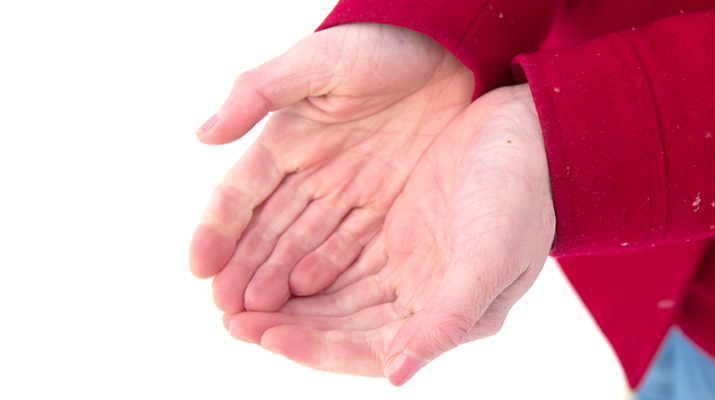Up to 10 percent of the population experience extreme sensitivity to cold, according to organization
By Kyra Mancine
As winter weather rushes in, we often we feel the chill in our fingers and in our toes. People pass this off as a sign of the season. However, for some, it can be a symptom of a more serious condition known as Raynaud’s.
Raynaud’s is a little known, yet relatively common disorder that causes poor blood flow to the hands and the feet as a result of dropping temperatures. People with this condition experience “attacks” when the smaller arteries that supply blood flow are disrupted. These vasospasms (narrowing of the blood vessels) result in fingers and toes turning white or blue as blood flow is lost.
This is accompanied by pain and numbness, often described as a throbbing, tingling or burning feeling. After an attack, skin color changes to red (or becomes blotchy) and, eventually, back to normal. Attacks can last for a few minutes to much longer. The disorder impacts fingers more than toes, women more than men, and is more common in colder climates.
Primary vs. Secondary
If you have primary Raynaud’s disease, you experience attacks described as above, but do not have underlying medical issues. This is the more common disorder. Secondary Raynaud’s disease is less common and can be the result of an underlying medical condition, such as lupus, scleroderma or rheumatoid arthritis — even frostbite.
Workers who work with vibrating power tools can also develop Raynaud’s. There is no cure for the disorder, although for secondary Raynaud’s, doctors can prescribe calcium blockers that help alleviate some of the symptoms. This type of medication is often prescribed for people with high blood pressure. The most severe Raynaud’s cases, while relatively rare, can result in skin sores or gangrene. However, according to the National Heart, Lung and Blood Institute, a majority of people who have Raynaud’s will not suffer from long-term tissue damage or disability.
Preventing an attack
If you have Raynaud’s, prevention of attacks is key. Stock up on hand warmers (hint – Dollar Stores have the best deal on them), get one of those pillows you can microwave and place on your hands, wear layers to keep the rest of your body warm, get into dry clothes as soon as possible after any outdoor activity where you might get wet (skiing, snow shoeing, ice skating, etc) and try to keep your stress level low. Mittens are recommended instead of gloves, as they trap air and can keep you warmer.
You need to be very mindful of weather conditions and attire when you have this chronic condition. In winter, the cold and damp can exacerbate symptoms, although attacks can happen all year. Air conditioning can also be a trigger. You will need regular furnace repair and maintenance to help with heating in home. Also include your ac repair Portland oregon maintenance to keep your area cool. Prevention is possible, but you need to be proactive, so schedule preventative maintenance with your central heating.
9 tips to try
1) Keep your overall body warm. Cold impacts Raynaud’s sufferers more than other people. You may have to wear layers/coats/sweaters during times when others will not have to dress in a similar fashion.
2) Use hand warmers — these portable heat generators make a big difference!
3) Have mittens or gloves to wear when needed. This can include when you shop in the grocery store or pump gas. Reaching into a cold freezer or handling a gas pump can cause an immediate flare up for some people.
4) Cut back or quit smoking — it can exacerbate symptoms
5) Eliminate or limit caffeine, as this can be a trigger
6) Limit exposure to the elements as much as you can
7) Practice mindfulness and stress reduction techniques
8) Use cold-allergy over-the-counter medications with caution — they have been known to contribute to attacks
9) Educate your friends, family and coworkers on your disorder. People can dismiss what they don’t understand. Help spread the word!
During an Attack
If you do have an attack, there are things you can do, such as:
1) Running your hands under warm (not hot) water to help bring them back to normal
2) Move your arms in a windmill type motion (to increase circulation)
3) Go to a quiet area out of the cold, slow your breathing and try to remain calm
If you think you may have Raynaud’s, consult your doctor to find out more and determine a treatment appropriate for your circumstances. Don’t be afraid to seek help. People often minimize this condition, not understanding the pain and severe nature of the affliction.
For more information, resources and support, visit the Raynaud’s Association website: www.raynauds.org.

